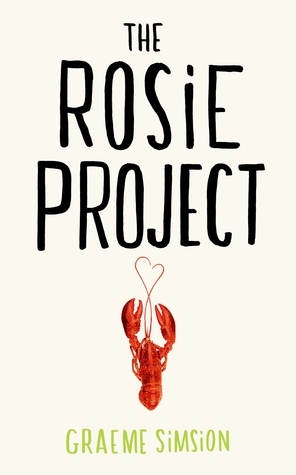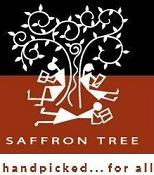Archive for the ‘Book Review’ Category
Cherar Kottai By Gokul Seshadri
Author: utbt2 Sep 2015
Updated to add: udumalai.com to buy Cherar Kottai
Why did Renuka Devi lie to learn the dhanur vidhya techniques from KaandhaLoor salaai?
What was hidden from the young Ravi Neeli during the Kalam competition?
Who was the other Chozha representative who fought against Ravi Neeli during the Kalam competition of the first Parandhaga Chozha?
What is the thaanai thalaivar’s motivation? Who is he? He seems to be the master pupeteer! How did AruL Mozhi Varman figure out who he is?
There seems to be a background as to why Paraman Mazhapadiyar is the Chozha representative for the Virodhi Varusha Kalam competition, but why tag Kamban Maniyanaar? What role does Maniyanaar play?
Who was the figure that ran away from the first meeting that was convened by VaLLuvanaar? Was there even a spy? Or was it VaLLuvanaar’s play to make his mission sound dangerous and important?
Why is Valluvanaar not as happy as the rest of the people when the heir returns?
What is the message ‘Sa’ ‘Ra’ left by Narayana Pattadhri’s older brother, in his death bed.
What is the message ‘O’ ‘Ra’ left by Aingaran before he lapses in to coma due to his head injury.
Will Aingaran come out of the coma in time to reveal the secret thaanai thalaivar’s identity?
Oh! This and many many more questions haunt me as I read Cherar Kottai by Gokul Seshadri. It is a well researched and written historical fiction, in Tamil, that is set in the late 900s, that talks about the ascend of the Chozha kingdom to its zenith. The story spans two books, 1200 pages, 120 chapters, at least 24 major characters and 5-6 plots all interlinked and complicated. This clearly is the Tamil version of Game Of Thrones, without the sadistic killing off, rape, flogging and plunder. And with the end of every chapter, I utter an ‘urrrrrrghhhhhh, can’t the stupid people(stupid people = the other characters who speak loudly when the shattering secret is being told) be quiet?’ And I push my bed time(people who know me, know how precious and unwavering my bed time is 🙂 ) to read one more chapter to see how much more is being unraveled. And after that it is rinse repeat, read the next chapter, so on and so forth.
As usual I have notes, bubble diagrams, character wikis and the thirst to get to the bottom of it all.
The style of writing is very similar to Kalki’s. The author is the narrator, jumping back and forth from one point to another both in space and time, revealing bit by bit how and something happened when it happened. Though the narration style is similar to that of Kalki and the book starts off where Kalki left off in his Ponniyin Selvan, the point of view in Cherar Kottai is much more balanced coming from Gokul.
While reading Ponniyin Selvan, Kalki has you completely convinced that the Chozhas are the good guys and are deserving of the throne. You, as a reader become champions of AruL Mozhi and Vandhiya Thevan. You are one step away from booing Pandiya Aabathudhavis. Though you sympathize with Nadini and at times are stumped by the complexity of her character, you are firmly rooted in Kundhavai’s camp.
In Cherar Kottai, Gokul through his meticulous research has presented how from 600BC till up to the 17th century, South India has bounced between the Pandiya Dynasty and the Chozha Dynasty, with an exception of the 600 hundred years under the Pallava Dynasty. Even under the Pallava rule, the Pandyas, unlike the Chozhas, did manage to hold on strongly to the Southern sections. So you start off with the Ponniyin Selvan impression, cheering for AruL Mozhi and slowly you start seeing things from the Pandiya point of view also. Though personally AruL Mozhi or Sadayanaar do not crave for a war, killing and displacement of homes, they realize that many times history is larger than an individual and his desires!
Gokul also talks in detail about the socio political structure of South India and how differently it evolved in each kingdom. The Cheras seem to have adopted a much more democratic set up since the 8th or 9th century. The Chozhas were a monarchy with the King at the top of the pyramid. The Pandiyas were some where in between with 5 people from the same family ruling the country, sharing their power, so that at any point of time there was always one Pandiya of age to rule!
The next thing that Gokul takes us through without stressing it, but becomes apparent as the story unravels is how RICH the country was, with trade between China, Singapore, Malay, Middle East flourishing. How there were multiple busy ports, customs, departments and divisions supporting this. Though it has been hinted how some foreign traders try to gain the favors of the kings so that they can retain exclusive trading rights, the annihilation seems to have started only when the Europeans set foot in our country! (If you haven’t already, read this. It is extremely depressing though.)
And the co-existence of multiple religions! Though the Kings themselves belonged to a certain faith, they still seemed to act secular. Especially Mahendra Varma Pallavar, Narashimha Varma Pallavar and majority of the Chozha/Chera/Pandiya kings. Gokul points to the existence of multiple monasteries sanctioned by Ashoka himself and by Ashoka’s son Mahinda while traveling parts of South India. Different stone inscriptions found at the ports indicate that a fair number of monks came all the way from Afghanistan, China and South East Asia to worship at these monasteries and how the rulers had budget allocation to care for the visiting monks. The story in multiple places, based on historical evidences, touches upon, how AruL Mozhi Varman, though a hard core Shaivite, looks at Buddhism as a way of life and supports the monasteries. But the very same monasteries were deemed ‘unsafe (as they are very old)’ by the Christian missionaries in the 1800s and were demolished. And how the sculptures from the monasteries that date back to at least 2BC carried off to various European palaces and museums!
I am only done with part#1. I still have part#2 which is another 600 pages spread over 60 chapters. But I just HAD to take a breather and let the world know about my excitement over this book. If you can read Tamil, buy, borrow, beg, steal, but do read.
11 reasons to read THE MINOR ADJUSTMENT BEAUTY SALON
Author: utbt26 Nov 2014
By Alexander McCall Smith. Book#14 in the series: No1 Ladies Detective Agency
Age: 15+
(1)The book not just passes the Bechdel test, but excels in the test!
(2)It has the wise and loving Mma Ramotswe in it.
(3) All books in the #1 ladies detective agency make happy bubbles in your soul.
(4)As you read the book, idyllic images of people sitting on a front porch, under a brilliant blue sky, sipping tea and making pleasant conversation floats in your mind. And that is a image you would want to hold on to. And who knows? It might get you through some difficult days.
(5) Mma is the kind of person who says gently but with conviction, “Mechanics can cook. Ladies can fix cars. It’s different these days Rra. Men can do things. Women can do things. There is no more work that is reserved just for one sort of person. Not any more.”
(6)She is gentle on herself too. This is not to be confused with low self esteem or not believing in herself.
(7) And the wonderful Mr.J.L.B.Matekoni does not believe in stereotypes. He would say with conviction, ‘That’s nonsense, Charlie. Women drivers are more careful than men. Men wreck their cars more often than some do, I’m afraid.’
(8) When Mma makes a list of things that she is grateful to have in her life, it would include not just her immediate family and work, but would extend to her employees, their family and her country.
(9)She understands a mother never forgets a child she had lost.
(10)As you are reading, certain snippets of wisdom hits you, ‘She had forgiven him, yes, but she still did not like to remember. And perhaps a deliberate act of forgetting went along with forgiveness. You forgave, and then you said to yourself: Now I shall forget. Because if you did not forget, then your forgiveness will be tested, perhaps many times and in ways you could not resist, and you might go back to anger, and to hating.’
(11)You start highlighting and bookmarking sections and you finally you see that you have liked every other line!
PS: This I found interesting.
Battle Hymn Of The Tiger Mother
Author: utbt24 Aug 2014
Ok, here is the thing……….. there is no battle, except in the author’s head. And such a single minded, my way or highway, head it is. The first part starts off okay, then as the fanaticism hits the roof is when you end up reading it with eyebrows raised and eyes wide.
I find the book hilarious though, not the bits where she says,
You can’t play extraordinarily well unless you’re relaxed……..“Imagine that you’re a rag doll”, Mr.Shugart would tell Lulu. “Floppy and relaxed, and not a care in the world. You’re so relaxed your arm feels heavy from its own weight…….Let gravity do all the work….Good, Lulu, good.”
“RELAX!” I screamed at home. “Mr.Shugart said RAG DOLL!”
But the parenting gems is what I found hilarious.
“That’s one difference between a dog and a daughter, I thought to myself later. A dog can do something every dog can do – dog paddle, for example – and we applaud with pride and joy. Imagine how much easier it would be if we could do the same with daughters! But we can’t; that would be negligence.“
And I am not the weak hearted. I am the kind that tells my children stuff like, “Can you please use your brain? That is what it is for.”, “What is for dinner? Food, food is for dinner. You eat what is served, no questions asked.” Other children coming to my house ask my daughters, “Why is your mother so strict?” and my daughters sigh and answer, “Yes, she is. I already told you no?” And I find this Chinese parenting extreme. May it is just Chua parenting and not Chinese parenting.
I am so reading sections about music practice to the children. So the next time I ask them to do their 10 min daily practice, they get perspective.
The Rosie Project
Author: utbt24 Aug 2014
As an Apple fan, I have never been impressed by Gates. I know it is extremely one sided, but I am what I am. So when I saw this book title pop as ‘Gates recommends‘ with his commentary, “It’s a funny and profound book about being comfortable with who you are and what you’re good at. I’m sending copies to several friends and hope to re-read it later this year. It is one of the most enjoyable novels I’ve read in a long time.”, I had to pick it up. It was my most objective way of getting to know Gates.
Rosie Project turned out to be hilarious and un-put-downable. It is my Rs.300 well spent! For some reason, John Oliver was my Don Tillman. What is yours? And I am quite liking Gates’ taste in books:)

 (No Ratings Yet)
(No Ratings Yet)

Recent Comments